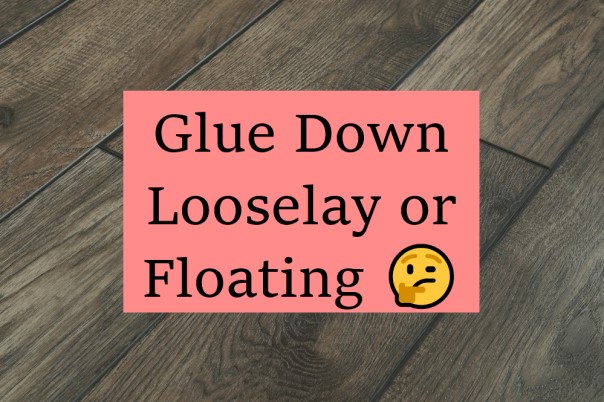LVP Installation Methods: Glue Down, Loose Lay, Floating

Mannington Adura Max River Mill Ember
Picture this, you’ve just picked out the design/style of luxury vinyl planks to place in your home. The process was a little tedious between deciding which brand and what qualities you needed from this flooring but you finally settled. All you have to do now is install it, so the hard decision-making part is over right? That is until you realize the many different ways of installing LVP. Georgia Carpet Industries is here to help see your flooring to the very end. We have a vast knowledge of installation and are happy to share it with you!
One of the most well-known ways of placing these floors is gluing them down. This method uses an adhesive tape or liquid glue to bond it to the subfloor. For higher traffic areas this is generally the better option because you don’t risk planks shifting in the slightest. Gluing your LVP is also more permanent so if you are not planning to continuously redo your floors, this is a great choice. It is also less of a hassle to replace planks if they get damaged. You just take out a plank and seal a new one in. There are two types of glues. Hard set is where the glue is spread on the subfloor (this is more commonly used for sheet vinyl) and you lay the planks on top but pressure-sensitive is where the planks already have adhesive and you simply press down to stick them to the subfloor. Pressure Sensitive adhesives can also be applied manually. With this gluing method, sometimes installation can take longer, especially if you are doing a larger area. Because of this, people tend to hire someone to do it for them which pushes the cost up. The glue-down planks themselves are cheaper than floating ones like loose lay or click but this price is offset with the extra supplies needed to install it. If you are looking for a quick and easy installation process, floating floors might be a better fit for you. They are slightly less permanent but they still hold all the same qualities of glue down planks.

Mannington River Mill Ember Room Scene
The two types are click/tongue & groove and loose lay. With click/tongue & groove, the planks fit together like puzzle pieces and snap into place. This is especially convenient if you are planning on installing the flooring yourself. The same goes for loose lay but in a slightly different way. It relies on friction to stay in place rather than an interlocking mechanism or glue. Friction causes the planks to grip onto the subfloor beneath it. It is also easy to move so if you decide to change houses, you can take the floor with you. For both of these floating options, repairs might be slightly more time consuming than their opponent. Since the planks interlock or are laying together, finding a perfect fit for a single plank in the midst of a row of them is a challenge. Oftentimes you might have to take out multiple planks before you can replace the damaged one to get it to lay or click just right. Hopefully, this installation information helped you finalize your options! Even if you are just starting your LVP journey, Georgia Carpet Industries is here to assist you. Visit our luxury vinyl page to see what flooring options we have for you.


